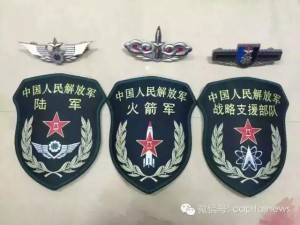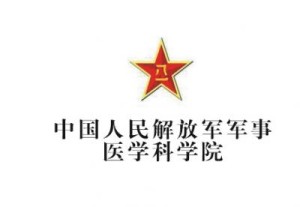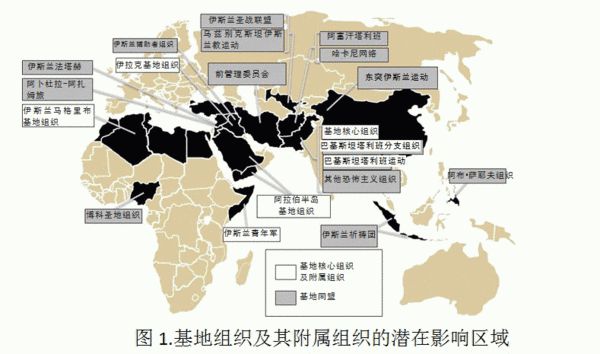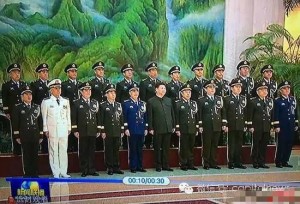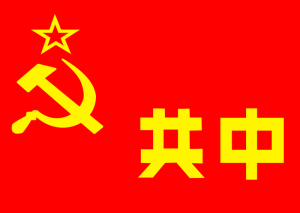Ministry of Defence in the People’s Republic of China
Demystifying China’s General Staff Directorate
中華人民共和國國防部揭秘中國總參首長
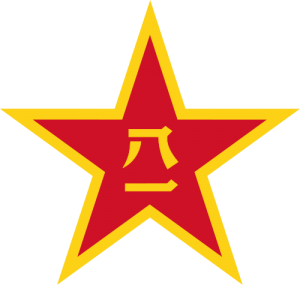
China’s People’s Liberation Army General Staff, subordinate to the Communist Party of China Central Committee. The Central Military Commission, is the organization which leads China’s national armed forces; it is a building and military operational command of the supreme command of authority. After streamlining under Xi Jinping’s recent modernization and adjustment, the Office of the General Staff now has an Operations Division, a Ministry of Information, the third section, is the Ministry of Information, which includes military training, a military affairs department, an equipment procurement department, a mobilization section, artillery, armor, combat engineering, anti-chemical warfare unit , electronic warfare radar units, Department of Political Affairs, Confidential Bureau of Surveying and Mapping Bureau, Foreign Affairs Bureau, Aviation Authority, and the military authority over other departments within the People’s Liberation Army (PLA).
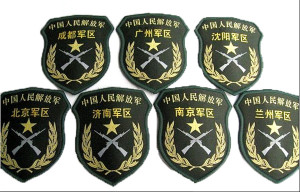
The following highlights at a few key sectors:
A General Staff
General Staff is considered a “General Staff Operations Department,” and is the ultimate operational military authority under China’s Central Military Commission, General Staff of the sequence is the “boss.” One is the most crucial of the General Staff, a division of the army all military commands are issued by one. He is the headquarters of the army during the war, when the war broke out, he was the representative of the country’s Central Military Commission, commander of military operations, and it also serves as the country’s highest military command, from the first place in the hierarchy of the General Staff.
Bai Jianjun incumbent Minister Major General Staff Operations Department, served as the Jinan Military Region deputy commander of the 54th Army, in March 2008, Marshall became the first 20 Army commander led his troops in May to participate in earthquake relief. 2009 appointed Minister of the General Staff Operations Division. There are five deputy minister one, are Major General, the direct leadership of the Chief of Staff Admiral Room Feng Hui.
General Staff of the General Staff is one of the largest department, under the jurisdiction of eight regular division level of bureau-level units, including the operational plan bureau, war Environment Agency, Joint Operations Bureau, Bureau of combat logistics organization, the Special Operations Bureau, the Bureau of the strategic objectives, readiness Bureau the exercise of the Authority. Two units would be under the jurisdiction of more to go, this section of the generals there are dozens of people, there is a joke, just throw a big stone, you can killed several generals. Liang Guanglie, chief of general staff came out after the reform, the US Joint Chiefs of Staff learning system, has been prepared to adjust. The military services, including the Army, Navy, Air Force, the Strategic Missile Forces (Artillery) – were in combat with a corresponding portion of the armed services bureau, in peacetime, the military services bureau responsible for tracking the corresponding daily activities of the military services, and to the Central Military Commission report. And in wartime, is responsible for coordinating the activities of the various military services.
A functional equivalent of the Pentagon’s Joint Staff J-3. Suppose the PLA is preparing a formal war plan, or emergency contingency plans, then this is a dry live. If Japan is now suddenly on the Diaoyu Islands to stir up trouble, then, is the one responsible for what, in 2001, the South China Sea military aircraft collided, is a direct command of the situation by the process. Also on the 1st to the 6th Shenzhou spacecraft launch, recovery, participation by a command of the General Staff, scheduling.
General Staff on duty 24 hours a belonging department, the command post located near the Summer Palace in northwest Beijing Yuquan Hill, commonly known as “Western Hills command post”, hundreds of meters deep underground command post by the elevator and out, can withstand nuclear attack; the Chinese people PLA land, sea and air, the Second Artillery Corps combat nerve center, similar to the Pentagon’s National Military Command Center. Its own communication center, information center, operations center, and other functional allegations. In wartime can act as a “national war command center” role. Western Hills command post with similar national readiness command center, the country there are many.
Second section of the General Staff
Two is the General Staff of the General Staff “intelligence unit”, is responsible for collecting, analyzing military and political intelligence, and the General Staff and the General Political Department of the three are considered military intelligence system. In a way, its strategic intelligence work and the Ministry of State Security (MSS) has partially overlap. Two main “customer” is the leadership of the General Staff, the Central Military Commission, the Department of Defense, branches of the military headquarters, the military-industrial leadership, and troop commander.
Major General Yang Hui is the incumbent minister of the General Staff bipartite, who has worked in Chinese Embassy in Yugoslavia, the former Soviet Embassy, the Russian Embassy and Kazakh embassy, and later served as vice minister of the General Staff of three, 31 Army deputy commander and concurrently he was appointed Russia Eastern Europe, Central Asia Institute, vice president, director of the Anti-Terrorism Research Center, China International Strategic Studies, Senior Fellow, adjunct professor of the Nanjing Institute of International Relations. Major General Yang Hui network warfare specialists. (Note: The latest data, Vice Minister Chen Friendship promoted bipartite minister)
General Staff consists of more than two bureau-level units.
A game in which the General Staff bipartite intelligence gathering is mainly responsible for Hong Kong and Taiwan. Of course, it is also responsible for important goals worldwide. The following inning with five offices: Guangzhou work at work at Beijing, Tianjin work at work at Shanghai, Shenyang work place. These work all over the place in this city in the name of certain offices appear. For example, work at Guangzhou, the Guangzhou Municipal People’s Government is the fifth office. Beijing Working People’s Government of Beijing Office called several offices. Now head of bipartite work at Beijing, the original military attaché in Russia. This is based on the geographical distribution of five configurations are also engaged in the work of the secret intelligence operations overseas. For example, Shenyang is responsible for intelligence gathering work in Russia, Eastern Europe, Japan, and the Guangzhou office work also seems to be responsible for intelligence gathering its adjacent areas. Its primary goal is to Hong Kong, Macao and Taiwan regions people. Shanghai and Nanjing at work at work are responsible for Western Europe and the United States.
Second, the General Staff Department of the Second Board, also known as “tactical intelligence bureau”, the PLA’s seven military regions (Guangzhou, Lanzhou, Nanjing, Chengdu, Jinan, Beijing, and Shenyang) each under the jurisdiction of the military intelligence unit, is being at the division level. These two sectors directly under the jurisdiction of the General Staff of the Second Board of Management. Primarily responsible for providing tactical intelligence to seven military forces and coordinate their work.
Two military intelligence officers of the General Staff Department of Military Strategy in order to meet demand and sent intelligence, belonging to the General Staff bipartite three innings, commonly known as military attaché office, there are more than four hundred employees, by geographical region and the importance of the Special Envoy of the collection activities is subdivided into seven groups. Military personnel gather intelligence on major foreign arms technology, the scale of war, military doctrine, economic and policy aspects. A lot of this information can be obtained from public sources, but sensitive technology in general must also be taken in order to obtain confidential manner. The main way to get there is the General Staff Intelligence bipartite three ways: First, in various capacities as a cover for sending military personnel to a foreign intelligence; the second is the analysis of military intelligence from foreign publications; third is sent to the embassy military attaché. Chinese embassies were sent by the military attaché bipartite General Staff, and not by the Foreign Ministry or the Ministry of Defence. Attaché is military personnel, the highest level is the military attaché in the United States, is the military level, the rank of Major General. Some military attaché stationed in other countries is a positive military level, some deputy corps, but in most countries the military attaché, were positive at the division level, which is the colonel.
Two military personnel have specialized training institutions, training programs including espionage skills and language ability. Two former Minister General Staff Major General Luo Yudong served as president of the Nanjing Institute of Foreign Affairs. Nanjing Foreign Affairs College now renamed the People’s Liberation Army Institute of International Relations, the predecessor of the PLA 793 hospital School of Foreign Languages, Luoyang and Nanjing after the Cultural Revolution moved from Zhangjiakou, is divided into two colleges. That’s two intelligence skills training and language skills of school.
Second, under the jurisdiction of the Department of the General Staff also have many intelligence analysis bureau, responsible for specific geographical targets deep intelligence analysis: If the bipartite four innings responsible for understanding the CIS and Eastern Europe, political and military policy, five innings for the US and Western countries Analysis of intelligence gathering; and the sixth inning put the focus on neighboring Asian countries and China. Five innings during political and economic analysis of the main advantage of open channels to obtain publications. Analysts bipartite in the United States often have to work for many years in the United States, because this particular study enjoy high reputation in China intelligence circles. At the same time it may take considerable time and effort to develop the language ability of the analyst, so that he can identify the cultural and political information publications in the United States and Europe reflected. Five innings two favorite sources of information is the US Congress and the RAND Corporation report file.
Bipartite seven innings for the Science and Technology Bureau, is responsible for military weapons research, design and development of intelligence. Seven foreign intelligence aimed at future military science and technology, and domestic weapons development unit has close ties, can play a significant role in weapons development process. Qiju existing six research institutions belong to the Agency’s Management: includes fifty-eighth Institute of espionage equipment development, production and technical assistance equipment seagulls electronic equipment factory, Beijing electronics factory, fifty-seventh Institute, North Jiaotong University Computer center and where your own computer center.
Two and a bureau of arms control, specifically designed to deal with foreign ballistic missile defense systems and arms control issues. Since the Foreign Ministry has a department in charge of arms control and disarmament, the People’s Liberation Army and he set up a similar department. And the arms control mechanism is provided under the two, it is because the work of intelligence and foreign affairs at the General Staff of the interior is made with a deputy chief of staff to charge.
Section II has the following departments:
Archives Collection publications abroad. It is a subordinate unit of military Yi Wen Press, the company responsible for the translation and re-military magazine published in other countries.
Secret Service is responsible for handling, conveying and collection of confidential documents, is also responsible for the development of security classification of documents.
Provide comprehensive logistics services for office staff, such as transportation, office equipment, entertainment centers and diet.
Guard Bureau is responsible for the safety of the Central Military Commission and the headquarters of leadership. In the second section of the security agencies also enjoy judicial powers.
In addition, the name of the General Staff publicly bipartite research institution “International Institute for Strategic Studies”, which is past the Beijing International Institute of Research. So that both experts and scholars Strategic Research Institute, is the second unit of the General Staff officer. For example, in the period after Chen Shui-bian, the Taiwan Strait tensions, often published by a young scholar to speak against Taiwan Xin Qi, which is the second portion of the General Staff of a scholar. Staff Intelligence bipartite level is much higher than the Ministry of National Security, as it has been extended from the Red Army era to the present, therefore, there is China’s CIA (US Central Intelligence Agency) said.
Second section of the General Staff intelligence officers who are basically three: dense industrial and commercial dry, anchored. The first man is of the General Staff of full-time military personnel bipartite, is in the preparation of such a person in the circle is called the “secret work” professionally trained. The Ministry of State Security and Public Security of these people are called “dense dry”, but also in public security or national security establishment in the interior. The second man is half in the series, in the circle is called the “commercial dry”, saying that they are ‘half in the series “because their names on the computer intelligence unit, but the staff did not enter the military system. The administrative establishment such as one called Zhang Peng, whether it is an accident in Guangdong beat up, robbed, or open the underground brothel, as long as there is no dead, police came when Zhang Peng, Peng can say: You I cannot move, I was engaged in intelligence, a certain person. In addition, if Peng exit, than People’s Republic of China on Foreign Exchange Administration can only take six thousand Hong Kong dollars in Hong Kong when the Chinese citizens to the provisions of carry sixty ten thousand Hong Kong dollars and then caught by Customs, customs Peng will tell people, you cannot move me, I was the mouth of intelligence, is a certain person. Then customs will likely make a phone call to the authorities to ask. And because Peng’s name is on the mouth of computer intelligence, there a check and said: Peng is our people after such confirmation, the customs then you can only put people to put money.
In fact, the second man inside, and can be divided into two categories: one is relatively close to the “secret workers” are both on the list of military computers, has officially made the uniforms. Also, there is a salary nominally, the Central Military Commission is Rehang. If this person is indeed engaged in intelligence work because of the expense, then the money will be handed over to the man’s family. This may usually receive no wages, but the state will retain a person for this. Another person is not doing intelligence, it can be said of such people into the intelligence sector is purely to be able to rely on the usual relationship between the two portions for trading a lot of money. Because everyone knows that Chinese military authorities have called exemption chapter, there is an absolute privilege exemption of imports of goods. A third person is called “anchored”, which most people in the community. The vast majority of these people who are affiliated to a number of foreign military in the local offices below. For example: the Guangzhou Military Intelligence Department of identity at the local level is the “Guangdong Provincial People’s Government fifth office”, the head of sub-director and political commissar. The original five-run political commissar called Fu Jun, vice minister-level equivalent of Guangzhou Military Intelligence Department, he turned out to be the Director of Personnel Department of the Guangzhou Military Region.
Three of the General Staff
Three General Staff, also known as “listening unit”, is responsible for interception, processing and transfer of foreign radio communication signal propagation. That is through a border and coastal areas in the numerous “listening post” in intercepting electronic intelligence work. Former intelligence officers monitoring 24 hours a day listening to foreign television, and now adds support for Internet surveillance. This is somewhat similar to the US National Security Agency (NSA). “Network Control Center” section of the three located in Haidian District. General Staff is currently estimated at three hundred thousand persons responsible for monitoring all international calls. All international calls on recording equipment in advance to enter some key words, such as the names of some of the Chinese leaders, some sensitive event name, as well as some of the taboo words, when the recorder is sensitive to these terms, it will automatically jump up, then monitor staff will immediately check this phone to track listening, and three also intercepted faxes overseas.
Three overseas has many listening posts, in 1992 the Government of Myanmar agreed to set up a listener Chinese station on the Andaman Islands, to monitor the Indian Ocean. 1994 Lao government agree China Champasak Province in southern Laos (Champasak) listens to establish three stations, one in Khong. 1999 Chinese in Cuba located on Lourdes (Lourdes) in a project to expand cooperation listens station, the station was originally established by the Soviet Union.
Three is also responsible for domestic military network communication listener work, any wired and wireless communication links cannot avoid this listener’s ears network between the military regions, which helps to combat security checks.
Similar to the second section of the General Staff, General Staff three in seven military also has subsidiary bodies, regional anti-military regions responsible for intelligence gathering and processing backbone listens station is the headquarters of three military regions to operate directly under the jurisdiction of the General Staff Department of the three management. The commander of military regions and staff have no right to intervene in the three institutions to expand their area of prevention work. There is no affiliation between its stationed with the provincial military and large military. These listeners stand personnel, budget, establish respectfully the responsibility of the three Department of the General Staff. Listening station military regions have different functions and objectives of the region, such as: the Lanzhou Military Region, responsible for three innings in signal communication with the Russian side of the listener, and shoulder the important mission of the Russian missile attack early warning. The department should belong to three eight innings, the “former Soviet Union responsible for intercept electronic communications signal”, Central Asian republics also the council’s target range, the listener object is the Sino-Russian border areas. Three 12th Bureau is mainly responsible for the “identification and tracking of foreign satellite – the US military satellites.” A facility located 12 Bureau of Xichang.
Three minister Major General Wu Guohua, political commissar: Major General Wang Yongsheng.
Four General Staff
Four General Staff as “electronic radar countermeasure unit”, established in 1990, is mainly responsible for electronic warfare, including electronic intelligence, electronic warfare, and radar control and so on. Minister of the General Staff had accounted for four flat Major. In recent years, the PLA and electronic warfare tactics Jizhen been strengthened. Before the formation of the General Staff of four electronic warfare is a duty two portions. In addition to the implementation of the policy content of the PLA electronic warfare theory prescribed, four also provides electronic defense to strategic objectives, such as the Western Hills in Beijing military command and control center of the C4I system. In providing electronic protective measures to important national goals, and also in charge of the General Staff of four electronic warfare units army down to the division level units belong. Also manages and signals intelligence and electronic warfare operations leading naval and air forces, such as airborne intelligence-gathering system, the Navy shipboard facilities.
There are also a number four innings, armed forces troops to provide guidance on business respectively, directly under the Department of Electronics and radar troops against troop’s vertical leadership, or their counterparts responsible for some of the work of the Institute. Including the Southwest Research Institute of Electronic (i.e. 29 Chengdu Institute), responsible for the development of radar jammer station. 54 Institute of General Staff, that the special “for the development of electronic warfare and radar unit radar pulse parameters analyzed digital signal processors electronic intelligence.” 36 Hefei Institute, responsible for the development of communication jammer. In addition, the General Staff as well as its own four military academies, including Hefei PLA Electronic Engineering Institute.
In addition to managing the PLA’s military communications systems outside the General Staff Communication Department also full communications infrastructure modernization drive in China has played a leading role. Mainly includes the following items:
◎ Military telephone network (non-secret)
◎ Confidential telephone network
◎ Army data communications network (probably above the “army of public data exchange network”)
◎ Field communications system, which “integrates sound, light, electrical signals, the use of aerial, underground, submarine data link.” (As tactical / operational network system, the integration of optical fiber communications, and satellite communications.)
Another item on the People’s Liberation Army communication systems include:
◎ Underground fiber-optic network
◎ Communications satellite
◎ Microwave Communication
◎ Shortwave radio stations
◎ Automatic command and control network
General Staff Communication Department has a lot of units and personnel within the establishment in the fixed communication facilities (such as high-frequency communications, microwave communications, satellite communications, telephone switching systems, tropospheric scatter communications) as well as mobile communications equipment strategy. Four General Staff under a lot of maintenance and logistics units within the establishment to the relevant equipment repair, supply, maintenance, testing, calibration, and perform the functions of the General terms. In short, the General Staff Communication Department shouldered the main military mission is: planning and realization of the PLA modernization operational command and administrative communication network. Currently in charge of General Staff Communication Department is to build a telecommunication network to meet the need to fight a “local war under high-tech conditions”. At this point, the communication unit is focusing on achieving “six changes” military communications. These changes include:
- from the analog communications to digital communications transformation
- The transition from cable to fiber optic cable
- Terminal to change from single-use multipurpose terminal
- From the electromechanical switching system to an automatic switching system changes
- from the single-task network transition to multi-task network
- from manual to automated systems management and intelligent system management change
General Staff Guard Bureau
People’s Liberation Army General Staff Guard Bureau is prepared, which is the Central Office Guard Bureau, responsible for directing the Central Guards Regiment, known as 8341 troops.
General Staff Guard Bureau is being prepared corps, under the eight regular division level unit, the person in charge is the rank of general, and Chief of Staff of the same level. Secretary is also first deputy director of the Central Office (ministerial level), deputy director of including Deputy Secretary are Major General. Responsible for specific security command and coordination of national leaders you.
General Staff Guard Bureau is responsible for the defense of the leading organs of the Party Central Committee (Politburo) of the Central Military Commission and a safe. Also included Vice President, Vice Chairman of the NPC, CPPCC vice-chairman, the deputy secretary, Supreme People’s Procuratorate long, Supreme Court president and above leaders. Almost all state leaders living near Zhongnanhai and Zhongnanhai, the General Staff Guard Bureau is undoubtedly high position. A head of the Guards Regiment, awarded the rank, indicating the central importance of this force, for example, if what happened now Zhongnanhai, the Central Guards Regiment to the quick, or stationed in the Beijing suburb of 38th Army to the quick. Thus in 1976, the CPC Central Committee smash gang of four, is the central security group (8341 units) completed. Central Guards Regiment in charge of the central leadership of the security work, which is a very important and very politically sensitive posts, who must fill the position is the central leadership of the most trusted people.
In many army troops designation in 8341 is arguably the most famous. It was in 1953 in the Central Guard Division to form the basis of a group together, was formally established in Zhongnanhai June 9 that year. First built in 8341 when the army only 1,000 people, the main task is to defend the five leaders – Mao Zedong, Liu Shaoqi, Zhu De, Zhou Enlai, Chen Yun. Owned by the Ministry of Public ninth inning leadership. The then Minister of Public Security is Lo Jui-ching, Wang Dongxing nine innings of the Secretary, the Deputy Secretary is Zhang Yaoci. During the “Cultural Revolution” 8341 troops replaced by the Central Office leadership, Wang Dongxing specifically responsible for leading, directing. Preparation expanding more than 8,000, the jurisdiction of seven brigades, 36 squadrons. The number of troops has been the equivalent of a division of troops. “913” after the incident, Lin Biao and the gang attempted to use against aircraft bombed Zhongnanhai, the Diaoyutai conspiracy, has set up an eighth brigade, namely cannon brigade, arranged around Zhongnanhai in order to ensure the safety of its over, but not for long on withdrawn. First built in 8341 when the guard unit or the target is more concentrated, mainly in Yuquan Mountain; new Rokkasho, Zhongnanhai, etc., and later expanded to Beidaihe, Tiananmen Square, the Great Hall, Diaoyutai. Due to various reasons, the scope of security is greatly increased during the “Cultural Revolution”, the addition of Changping farm, Beijing Botanical Garden, Garden Village, East Cabinet and other places.
General Staff Guard Bureau under the jurisdiction of departments are: the General Office of Political Affairs, Policy Research Department, the Department (command and coordination center), Ministry of Information Technology, Communications, Training Wing (Cadre Training Group), livelihood security department, construction review Ministry Liaison Department, cadres Force (Guard Battalion), a brigade authorities Service Center (Zhongnanhai) Second Battalion (Great Hall) Third Brigade (new six) four teams (Yuquan Hill) five brigades (Beidaihe) Six Brigade (Special Operations Battalion) Seven Battalion (Cadre Battalion) Eight brigade is (engineering and maintenance team).
Leading security standards are divided into: a guard of the Politburo Standing Committee.
Politburo member, alternate member of the CPC Central Committee, vice chairman of National People’s Congress, State Councilor for the two guards (the Chinese Nationalist Party Chairman Lien Chan to visit the mainland to strengthen the use of two security guards). CPPCC Vice Chairman, Supreme People’s Court, Supreme People’s Procuratorate for the three guards over the leadership after retirement if, based upon the original standard security guards. Provinces, autonomous regions, municipalities directly under the main party leaders who also guard the goal, secretary of the country, the city, the state, as the case may determine the level of security, usually three guards and so on.
8341 security work forces very tight organization, the principal leaders of both the division of labor forces, Mao’s guards done by Wang Dongxing, Zhang Yaoci responsible, guards brigade is a brigade, security forces Zhongnanhai A zone is a brigade, a squadron; Lin Biao The guards work by the deputy head Zhang is responsible for, guards brigade is the Second Battalion, Second Battalion of the Guard squadron is a squadron; because Zhou Enlai lived in Zhongnanhai, the guards brigade is also a brigade, a squadron guards brigade three squadrons headed by Yang in. Other Politburo Standing Committee also has specific security brigade and squadron and responsible person. Was responsible for a team of Zhongnanhai and the surrounding area, the Second Battalion in charge of Maojiawan and the surrounding area, the four teams in charge of security in and around the Yuquan Shan, seven brigade responsible for the central directorate Beidaihe resort and the surrounding area, five brigade responsible for the Diaoyutai State and surrounding areas, other Several brigades are mobile brigade. In addition, each security zone has divided into specific perimeter and inner circle, the inner circle is divided into A, B, C area. A person can freely access area B, C area, but B, C zone A zone cannot easily access. In the 1970s to over Beijing’s Great Hall of the people know or see around pulling the cord, there are security guard, pedestrians cannot enter the security zone. Outside the red walls of Zhongnanhai have fixed posts and swimming whistle, of course, plainclothes whistle. Zhongnanhai, the Great Hall in addition to sentry outside the door, door security zone there, an outsider, a stranger is simply to get in. Mao Zedong, Zhou Enlai and others around the residence and living areas as well as multi-channel guard, unrelated persons, including 8341 troops of some leading cadres without the approval and consent also do not allow access, which is strictly regulated. 8341 cadres and soldiers because of their work out of Zhongnanhai, the Sentinels know can be released, and did not know where the company should be contacted to ensure correct case can be released.
However, this designation in 8341 there was a time back and forth change too. In 1975, when the military forces of the designation by the 4-digit rise to 5 digits, but the central security group is still 4 digits, then 8341 to 57001 by the designation of external, internal and remains unchanged, but Soon forces have received notice of the change callback 57001 8341 until shortly after the death of Chairman Mao in 1976, 8341 before it was changed to 57003, in October 2000 to 61,889 units.
General Staff Guard Bureau leaders
SECRETARY: Cao Qing in
Deputy Director:
Major General Li Hongfu
Major General Yan Min
Ma Jinhu Major General in charge of the National People’s Congress Standing Committee Chairman Wu Bangguo guard
Major General Zhao Jiang stay
Major General Sun Yuan Gong
Major Jiangguang Qing
Major General Zhou Dongsheng
Major General Ye your new
The leaders of the Central Military Commission
CMC leadership
PRESIDENT: Xi Jinping
Vice-Chairmen: Xu Liang Fan Changlong
Members: Chang Wanquan Room Feng Hui Zhang Yang Zhao Xia Wu Shengli and Zhang Shi Wei Feng and Ma Xiaotian
Former Chief of Staff
Zhou Enlai and chief of staff
Marshal Xu Xiangqian
Marshal Nie
Su Yu
Huang Kecheng general
Lo Jui-ching generals
Yang Chengwu
Admiral Huang Yongsheng
Deng Xiaoping’s chief of staff
Admiral Yang Dezhi
Chi Haotian
Zhang Wannian
Fu Admiral
Liang Guanglie
Chen Bingde
Admiral Room Feng Hui
Belonging to the Military Academy of the General Staff
Nanjing Army Command College
Shijiazhuang Army Command College
Information Engineering College (Zhengzhou)
Artillery Command College (Hebei Xuanhua)
Shenyang Artillery Academy
Zhenjiang Institute of boats
Engineering Command College (Xuzhou)
Communication Command Academy (Wuhan)
Chongqing Communication Institute
Electronic Engineering Institute (Hefei)
Institute of International Relations (Nanjing}
Army Missile Academy (Langfang)
Nanjing University of technology & Engineering
Anhui Artillery Academy
Bengbu Tank Institute
Xi’an Communication Institute
Luoyang Foreign Languages Institute
Zhangjiakou Communication Institute
Zhengzhou Air Defense Forces College
Sports (communication) College (Guangzhou)
Engineering Institute of Chemical Defense Command (Hebei Changping)
Beijing Army Aviation Academy
National Defense and the National Defense University directly under the Central Military Commission, not to the local college enrollment
Original Mandarin Chinese:
中國人民解放軍總參謀部,在中國共產黨中央委員會、中央軍事委員會領導下,負責組織全國武裝力量建設和作戰指揮的最高軍事統率機關。經過精簡調整後,總參謀部下設辦公廳、作戰部、情報部、第三部、信息化部、軍訓部、軍務部、裝備部、動員部、炮兵部、裝甲兵部、工程兵部、防化部、電子對抗雷達部、政治部、機要局、測繪局、外事局、陸航局、管理局等部門。下面重點介紹一下幾個主要部門:
總參一部
總參一部就是“總參作戰部”,是總參序列中的”老大”。一部是總參最最要害的一個部門,全軍所有的軍事命令都是通過一部下達。他是全軍作戰時的總指揮部,在戰爭爆發時,他就代表中央軍委指揮全國的軍事行動,它同時也作為國傢最高軍事指揮部,在總參的層次結構中起首位作用。
白建軍少將是現任總參作戰部部長,曾擔任過濟南軍區第54集團軍副軍長,2008年3月任陸軍第20集團軍軍長,5月率部參加汶川地震抗震救災。2009年任總參謀部作戰部部長。一部還有5個副部長,都是少將,由總參謀長房峰輝上將直接領導。
總參一部是總參最大的一個部門,下轄8個正師級的局級單位,包括作戰計劃局、戰爭環境局、聯合作戰局、作戰組織運籌局、特種作戰局、戰略目標局、戰備局、演習管理局。下轄的二級的單位那就多瞭去瞭,這個部的將軍有幾十人,有笑話,隨便扔個大石頭,就可以砸死幾個將軍。梁光烈總參謀長上臺後搞瞭改革,向美國的參謀長聯席會議制度學習,已經進行瞭編制調整。各軍種,包括陸軍、海軍、空軍、戰略導彈部隊(二炮)–均在作戰部設有相應的軍種局,在平時,這些軍種局負責追蹤其對應的各軍種日常活動情況,並向中央軍委匯報。而戰時,則負責協調各軍種的活動。
一部在職能上相當於五角大樓Joint Staff的J-3。假設解放軍正在擬定一份正式的作戰計劃,或者突發事件的應變計劃,那麼這就是一部幹的活。如果現在日本突然在釣魚島挑起事端,那麼,負責處理就是一部的事情,2001年,南海軍機相撞,就是由一部直接指揮事態處理的。還有神州1號到6號飛船的發射、回收,都由總參一部參與指揮、調度。
總參一部屬於24小時值班的部門,指揮所位於北京頤和園西北的玉泉山附近,俗稱“西山指揮所”,指揮所深處於上百米的地下,通過電梯進出,可以抵禦核打擊;是中國人民解放軍陸、海、空、二炮的作戰神經中樞,類似於五角大樓的國傢軍事指揮中心。其擁有通信中心、情報中心、作戰指控中心等職能。在戰時可以起到“國傢戰爭指揮中心”的作用。與西山指揮所類似的國傢戰備指揮中心,全國還有多處。
總參二部
總參二部就是總參“情報部”,主要負責搜集、分析軍事政治情報,與總參三部和總政聯絡部都屬軍隊情報系統。在某種程度上,其戰略情報方面的工作與國傢安全部(MSS)有部分重迭。二部的主要”客戶”是總參領導,軍委、國防部、軍兵種總部、軍事工業集團的領導,和部隊指揮員。
楊暉少將是現任總參二部的部長,曾先後在中國駐南斯拉夫使館、前蘇聯使館、俄羅斯使館和哈薩克使館工作,後又擔任總參三部副部長、31集團軍副軍長,並兼任任中國俄羅斯東歐中亞學會副會長,中國國際戰略學會反恐怖研究中心主任、高級研究員,南京國際關系學院兼職教授。楊暉少將是網絡戰專傢。(註:最新資料,二部副部長陳友誼晉升部長)
總參二部下設多個局級單位。
其中總參二部一局主要負責香港和臺灣的情報收集。當然,它也負責全世界范圍內的重要目標。一局下面有五個辦事處:廣州工作處、北京工作處、天津工作處、上海工作處、沈陽工作處。而這些工作處都是以駐這個城市的某某辦公室的名義出現。比如說廣州工作處,就是廣州市人民政府第5辦公室。北京工作處就叫北京市人民政府第幾辦公室。現在二部北京工作處的負責人,原來是駐俄羅斯的武官。這五個根據地理分佈配置的工作處也從事海外秘密諜報行動。例如,沈陽工作處負責俄羅斯、東歐、日本的情報收集,廣州工作處看來也是負責其鄰近地區的情報收集。其首要目標是港澳臺地區的人。上海工作處和南京工作處分別負責西歐和美國。
總參二部二局,又稱“戰術情報局”,解放軍七大軍區(廣州、蘭州、南京、成都、濟南、北京、沈陽)各有軍區下轄的情報部,屬正師級。這些部門直接歸口總參二部二局管理。主要負責向七大軍區部隊提供戰術情報並協調其工作。
總參二部為滿足軍事戰略情報需求而派出的軍情人員,屬於總參二部三局,俗稱武官處,有四百多員工,按地理位置和所在地區對特使搜集活動的重要性,又被細分為七個小組。軍情人員主要搜集有關外國武器技術、戰爭規模、軍事學說、經濟和政策方面的情報。很多這種信息都能從公開渠道得到,但敏感技術一般來說還必須采取秘密方式才能獲得。總參二部獲得情報的方式主要有三個途徑:一是向外國派遣以各種身份為掩護的軍事情報人員;二是從外國的公開出版物上分析軍事情報;三是向駐外使館派出武官。中國駐各國大使館的武官都是由總參二部派出,而不是由外交部或國防部。武官是軍職人員,級別最高的是駐美國的武官,正軍級,軍銜是少將。駐其他國傢的武官有些是正軍級,有些是副軍級,但是駐多數國傢的武官,都是正師級,也就是大校。
二部有專門機構培訓軍情人員,培訓項目包括諜報技巧和語言能力。原總參二部部長羅宇棟少將曾擔任南京外交學院院長。南京外交學院現更名為解放軍國際關系學院,該院前身是中國人民解放軍793外國語學院,文革後從張傢口遷至洛陽和南京,分為兩個學院。這就是二部培訓諜報技巧和外語能力的學校。
總參二部還下轄有多個情報分析局,負責對特定地域的目標進行深層次的情報分析:如二部四局負責瞭解獨聯體和東歐的政治軍事政策,五局負責美國和西方國傢的情報搜集分析;而六局則把工作重點放在與中國相鄰的亞洲國傢上。五局在進行政治和經濟分析時主要利用公開渠道得到的出版物。二部駐美國的分析傢常常要在美國工作很多年,因為這一特殊的研究在中國情報圈內享有較高的聲譽。同時可能要花相當多時間和精力來培養語言能力強的分析傢,這樣他才能辨別出美國和歐洲公開出版物中所反映的文化和政治信息。五局最喜歡的兩個美國資料來源就是國會的報告和蘭德公司的文件。
二部七局為科技局,主要負責軍事武器的研究、設計和開發情報。七處瞄準的是國外未來軍事科學技術的情報,和國內武器研發單位有密切的聯系,能夠在武器研發過程中起到很大作用。七局現有六個研究機構屬該局管理:包括開發諜報設備的第五十八研究所、生產技術性援助設備的海鷗電子設備廠、北京電子廠、第五十七研究所、北方交通大學計算機中心和該處自己的計算機中心。
二部還有一個軍控局,專門用來處理國外彈道導彈防禦系統和軍控問題。由於外交部設有一個負責軍控和裁軍的部門,所以解放軍自己也設一個類似的部門。而把軍控機構設在二部之下,則是因為情報和外事方面的工作在總參內部是由同一名副總參謀長來分管。
二部還有以下幾個部門:
檔案局 收藏海外的公開出版物。它的一個下屬單位就是軍事誼文出版社,該公司負責翻譯和重新出版其他國傢的軍事雜志。
機要局 負責處理、傳達和收藏機密文件,也負責為文件制定密級。
綜合局 為工作人員提供後勤服務,如交通、辦公設備、娛樂中心和飲食。
警衛局 負責中央軍委委員和各總部領導的人身安全。在二部各機構的安全工作中它還享有司法權。
另外,總參二部研究機構的對外公開名稱是“國際戰略研究學會”,也就是過去的北京國際研究學會。所以凡是戰略研究協會的專傢學者,都是總參二部的軍官。比如說在陳水扁上臺以後,臺海局勢緊張期間,經常發表針對臺灣講話的一位年輕的學者辛旗,這就是總參二部的一個秀才。總參二部的情報水平比國傢安全部高很多,因為它從紅軍時代一直延續到現在,因而,有中國的CIA(美國中央情報局)之稱。
總參二部的情報人員基本上有三種人:密工、商幹、掛靠。第一種人是總參二部的專職軍情人員,是在編制內的,這種人在圈子裡被叫做“密工”,受過專業培訓。而國安部和公安部的這類人則都叫“密幹”,也是在公安或者國安內部編制裡的。第二種人是半在編的,在圈子裡被稱為“商幹”,說他們是’半在編”,就是因為這些人的名字上瞭情報部的電腦,但是人員並沒有進入軍情系統的行政編制。比如一個叫張鵬的,在廣東出事瞭。不管是打人瞭,搶劫瞭,還是開地下妓院瞭,隻要沒有死人,公安來抓張鵬的時候,張鵬就可以說:你不能動我,我是搞情報的,某某的人。另外,如果張鵬出境時,超過中華人民共和國外匯管理局關於中國公民到香港時隻能帶六千港幣的規定,隨身帶瞭六十萬港幣而被海關抓住的話,張鵬又會告訴海關的人,你不能動我,我是情報口的,是某某的人。這時海關就可能會打個電話到有關部門去問。而因為張鵬的名字是上瞭情報口電腦的,那邊一查就說:張鵬是我們的人。這樣確認瞭之後,海關這時就隻能放人、放錢。
其實在第二種人裡邊,又可以分兩類:一類是比較接近於“密工”的,是既上瞭軍情電腦名單,也正式發瞭軍裝的。並且,在名義上還有一份工資,軍委是認賬的。如果這個人確實是因為搞情報工作犧牲瞭,那麼這筆錢會交給這個人的傢屬。可能平時這份工資並沒領,但是國傢會替這個人存著。另一類人其實並不做情報,也可以說這類人進軍情部門純粹是為瞭平時能夠靠二部的關系作買賣賺很多錢。因為,誰都知道,中國軍情部門有所謂的免檢章,有貨物進口免檢的絕對特權。第三種人被稱為“掛靠”,社會上這種人最多。而這些人當中的絕大部分人是掛靠於軍情在地方上對外的一些辦公室下邊的。比如說:廣州軍區情報部在地方上的身份是“廣東省人民政府第五辦公室”,負責人分主任和政委。原來五辦的政委叫傅軍,級別相當於廣州軍區情報部的副部長,他原來是廣州軍區人事處的處長。
總參三部
總參三部,又稱“監聽部”,主要負責偵聽、處理和轉送國外電臺的通信傳播信號。也就是通過設在各邊境和沿海地區的無數“監聽站”進行電子情報的截收工作。情報人員以前全天24小時監聽監看外國電視,現在又增加瞭對互聯網的監視。這有點類似於美國的國傢安全局(NSA)。三部的“網絡控制中心”位於北京市海淀區。總參三部目前估計有十幾萬人員負責監聽所有國際長途電話。所有的國際長途電話在錄音設備上預先輸入一些關鍵詞匯,例如一些中國領導人的名字、一些敏感的事件名稱、以及一些隱諱的詞語,當錄音機感應到這些詞匯時,就會自動跳起來,這時監聽人員就會立即對這個電話進行跟蹤監聽檢查,而且三部也同時截收海外的傳真。
三部在海外擁有眾多的監聽站,1992年緬甸政府同意中國在安達曼海的島嶼上設立偵聽站,以監視印度洋。1994年老撾政府同意中國在老撾南方占巴塞省(Champasak)設立三個偵聽站,其中一個在Khong。1999年中國在古巴位於盧爾德(Lourdes)的一個偵聽站項目上展開合作,該站最初是由蘇聯援助建立。
三部也負責對國內軍網通信的偵聽工作,各大軍區之間任何有線和無線的通信聯系都無法避過這張偵聽網的耳朵,這有助於對戰備安全的抽查。
與總參二部類似,總參三部在七大軍區也有下設機構,各大軍區防區內負責情報收集和處理的骨幹偵聽站是由各大軍區司令部三局來運作,直接歸口總參三部管理。各大軍區的司令和參謀無權幹預在其防區內展開工作的三部機構。其同所駐紮的省軍區及大軍區之間沒有任何隸屬關系。這些偵聽站在人員、編制、預算、組建方面,完全由總參三部負責。各大軍區的偵聽站有不同的功能和目標區域,例如:蘭州軍區的三局負責偵聽俄羅斯方面的信號通信,並肩負著對俄方導彈攻擊進行早期預警的重要使命。這個部門應該隸屬於三部八局,其”負責截聽前蘇聯地區的電子通信信號”,中亞地區各共和國也是該局的目標范圍,其偵聽對象是中俄邊界地區。三部十二局主要負責”識別和跟蹤外國衛星–即美國軍用衛星”。十二局的一處設施位於西昌。
三部部長為吳國華少將,政治委員:王永生少將.
總參四部
總參四部為“電子雷達對抗部”,組建於1990年,主要負責電子戰,包括電子情報、電子對抗、雷達管制等。總參四部部長為曾占平少將。近年來,解放軍在戰術技偵和電子戰方面得到瞭加強。在總參四部組建之前,電子戰是二部的一項職責。除瞭執行解放軍電子戰理論政策所規定的內容之外,四部也向戰略目標提供電子防禦,例如位於北京西山的軍事指揮控制中心的C4I系統。在向國傢重要目標提供電子保護措施的同時,總參四部也掌管全軍下至師級單位所屬的電子戰分隊。同時也管理和領導海空軍部隊的信號情報和電子戰的運作,如機載情報收集系統、海軍艦載設施。
四部裡還設有一些局,分別對陸海空三軍部隊在業務上提供指導,對直屬該部的電子對抗部隊和雷達兵部隊進行垂直領導,或負責一些對口研究所的工作。主要包括西南電子研究所(即成都第29研究所),負責雷達幹擾發射臺的研發。總參第54研究所,該所專門”為電子對抗與雷達兵部研制分析雷達脈沖參數的數字電子情報信號處理器。” 合肥第36研究所,負責研發通信幹擾發射臺。此外,總參四部還有自己的軍事院校,其中包括安徽合肥解放軍電子工程學院。
除瞭管理解放軍的軍事通信系統之外,總參通信部也在全中國的通信基礎設施現代化建設方面扮演瞭領頭作用。主要包括以下一些項目:
◎軍用電話網(非密)
◎保密電話網
◎全軍數據通信網絡(可能就是上述的”全軍公共數據交換網絡”)
◎野戰通信系統,它”整合瞭聲、光、電信號,利用空中、地下、潛艇數據鏈。”(就像戰術/作戰網絡系統,整合瞭光纖通信和衛星通信。)
另一個關於解放軍通信系統的項目包括:
◎地下光纖網絡
◎通信衛星
◎微波通信
◎短波廣播站
◎自動指揮和控制網絡
總參通信部設有很多建制內的單位和人員從事著固定通信設施(例如高頻通信、微波通信、衛星通信、電話交換系統、對流層散射通信)以及移動戰略通信設備。總參四部下設大量建制內的維護和後勤部隊,以對相關設備進行修理、供給、維護、測試、校準,並執行總務方面的職能。總之,總參通信部肩負的主要軍事使命是:規劃和實現解放軍作戰指揮及行政管理通信網絡的現代化。目前總參通信部正負責建設一個長途通信網絡,以滿足打一場”高技術條件下局部戰爭”的需要。在這點上,通信部正著力於實現軍事通信的”六大轉變”。這些轉變包括:
1.從模擬通信向數字通信的轉變
2.從電纜向光纜的轉變
3.從單用途終端向多用途終端轉變
4.從機電交換系統向自動交換系統的轉變
5.從單任務網絡向多任務網絡的轉變
6.從人工系統管理向自動以及智能系統管理的轉變
總參警衛局
總參警衛局是解放軍編制,也就是中央辦公廳警衛局,負責指揮中央警衛團,俗稱8341部隊。
總參警衛局是正軍級編制,下設8個正師級單位,負責人是上將軍銜,與總參謀長平級。局長兼任中央辦公廳第一副主任(正部級) ,副局長包括常務副局長均為少將。負責具體指揮協調各位國傢領導人的安全。
總參警衛局主要負責保衛黨中央領導機關(政治局常委)和軍委領導的安全。此外還包括國傢副主席、人大副委員長、政協副主席、中紀委副書記、高檢院長、高法院長及其以上領導人。國傢領導人幾乎都生活在中南海和中南海附近,總參警衛局無疑是位高權重。一個警衛團的團長,授予上將軍銜,說明中央的對這個部隊的重視,舉個例子,如果現在中南海出瞭什麼事,是中央警衛團來的快,還是駐紮在北京郊區的第38集團軍來的快。因此1976年,黨中央粉碎四人幫,就是由中央警衛團(8341部隊)完成的。中央警衛團負責中央領導的保安工作,這是一個很重要的也很政治敏感的職位,擔任此職者必是中央領導最信任的人。
在我軍諸多部隊番號中,8341可以說是最出名的。它是1953年以中央警衛師一團為基礎組建起來的,當年6月9日在中南海正式成立。8341部隊初建時隻有1000多人,主要任務是保衛五大領袖–毛澤東、劉少奇、朱德、周恩來、陳雲。歸公安部第九局領導。當時的公安部部長是羅瑞卿,九局局長是汪東興,副局長是張耀祠。”文革”期間8341部隊改由中央辦公廳領導,汪東興具體負責領導、指揮。編制不斷擴大達8000多人,轄7個大隊、36個中隊。部隊人數已相當於一個師的兵力。”913″事件後,針對林彪一夥企圖用飛機轟炸中南海、釣魚臺的陰謀活動,又成立瞭第八大隊,即機炮大隊,佈置在中南海周圍以確保其上空的安全,但時間不長就撤銷瞭。8341初建時警衛單位或目標較為集中,主要有玉泉山;新六所、中南海等地,後來擴大到北戴河、天安門、人民大會堂、釣魚臺等。”文革”期間由於種種原因警衛范圍更是大大地增加瞭,又多瞭昌平農場、北京植物園、花園村、東官房等地。
總參警衛局下轄部門主要有:辦公廳、政治部、政策研究部、行動部(指揮協調中心)、情報部、技術部、通信部、訓練部(幹部訓練大隊)、生活保障部、建設審查部、聯絡部、幹部隊(衛士大隊)、機關服務中心一大隊(中南海)二大隊(人民大會堂)三大隊(新六所)四大隊(玉泉山)五大隊(北戴河)六大隊(特種作戰大隊)七大隊(幹部大隊)八大隊是(工程維護大隊)。
領導警衛標準分為:政治局常委為一級警衛。
政治局委員、候補委員、中央書記處書記、全國人大副委員長、國務委員為二級警衛(中國國民黨連戰主席至大陸訪問采用二級加強警衛)。全國政協副主席、最高人民法院院長、最高人民檢察院檢察長為三級警衛,以上領導如果退休之後,仍按原警衛標準警衛。省、自治區、直轄市的黨政主要領導人員也是警衛目標,各地、市、州的書記可以視情況決定警衛級別,通常是三級警衛等。
8341部隊的警衛工作組織相當嚴密,部隊主要領導都有分工,毛澤東的警衛工作由汪東興、張耀祠具體負責,警衛大隊是一大隊,中南海甲區的警衛部隊是一大隊的一中隊;林彪的警衛工作由副團長張宏負責,警衛大隊是二大隊,警衛中隊是二大隊的一中隊;周恩來因住在中南海,警衛大隊也是一大隊,警衛中隊是一大隊的三中隊,由楊德中負責。其他政治局常委也都有具體警衛大隊和中隊及負責人。當時一大隊負責中南海及周圍地區,二大隊負責毛傢灣及周圍地區,四大隊負責玉泉山及周圍的警衛,七大隊負責北戴河中央首長療養地及周圍地區,五大隊負責釣魚臺及周圍地區,其他幾個大隊是機動大隊。此外,每個警衛區又具體分為外圍和內圍,內圍又分甲、乙、丙區。甲區的人可以自由出入乙、丙區,但乙、丙區的人不能隨便出入甲區。上世紀70年代到過北京的人都知道或看到人民大會堂周圍拉著線繩,有警衛站崗,行人是不能進入警衛區的。中南海的紅墻外也有固定哨和遊動哨,當然還有便衣哨。中南海、人民大會堂除門口有哨兵外,門裡還有警衛區,外人、生人是根本就進不去的。在毛澤東、周恩來等人的住地周圍及生活區還有多道門衛,無關人員,包括8341部隊的一些領導幹部不經批準和同意也根本不允許出入,這是嚴格規定的。8341的幹部戰士因工作需要出入中南海,哨兵認識的可以放行,不認識的要和所在連隊進行聯系,確保無誤的情況下才能放行。
不過,8341這個番號在有段時間來回變動過。在1975年,那時全軍部隊的番號都由4位數上升為5位數,但中央警衛團仍然是4位數,後來番號對外由8341改為57001,對內仍然不變,但不久部隊又接到通知,把57001改回叫8341,直到1976年毛主席逝世後不久,8341才又改為57003,2000年10月改為61889部隊。
總參警衛局領導人
局長:曹清中將
副局:
李洪福少將
顏 敏少將
馬金虎少將 負責全國人大常委會委員長吳邦國警衛
趙留江少將
孫元功少將
薑廣清少將
周冬生少將
葉貴新少將
軍委領導人
中央軍委領導
主席:習近平
副主席:范長龍 許其亮
委員:常萬全 房峰輝 張陽 趙克石 張又俠 吳勝利 馬曉天 魏鳳和
歷任總參謀長
周恩來 兼總參謀長
徐向前 元帥
聶榮臻 元帥
粟裕 大將
黃克誠 大將
羅瑞卿 大將
楊成武 上將
黃永勝 上將
鄧小平 兼總參謀長
楊得志 上將
遲浩田 上將
張萬年 上將
傅全有 上將
梁光烈 上將
陳炳德 上將
房峰輝 上將
隸屬於總參的軍校
南京陸軍指揮學院
石傢莊陸軍指揮學院
信息工程學院(河南鄭州)
炮兵指揮學院(河北宣化)
沈陽炮兵學院
鎮江船艇學院
工程指揮學院(江蘇徐州)
通訊指揮學院(湖北武漢)
重慶通信學院
電子工程學院(安徽合肥)
國際關系學院(江蘇南京}
陸軍導彈學院(河北廊坊)
南京理工大學
安徽炮兵學院
蚌埠坦克學院
西安通信學院
洛陽外國語學院
張傢口通信學院
鄭州防空兵學院
體育(通信)學院(廣州)
防化指揮工程學院(河北昌平)
北京陸軍航空兵學院
國防大學和國防科技大學直接隸屬中央軍委,不向地方高考招生
Original Source: http://www.81.cn/jwgd/index.htm
